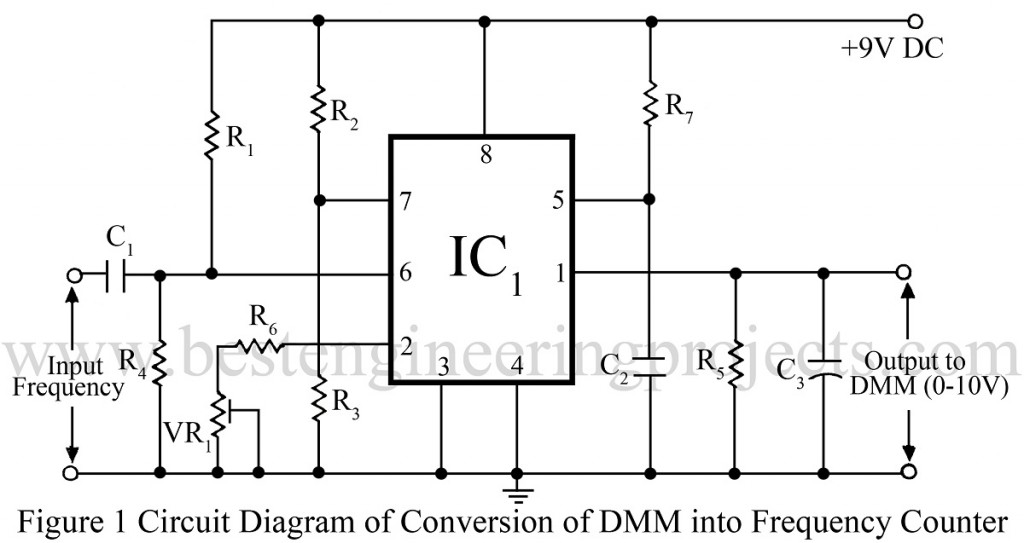As being electronic hobbyists we love to design and verify various types of circuits, we often have to measure the output frequency. The device which is used for this purpose is called the frequency counter. A frequency counter is an electronic device that measures the frequency of electric and electronic circuits by counting clock pulse. The frequency counter available in markets is quite expensive and sometimes we cannot afford it. In BEP LAB we designed and verified a circuit called “Frequency Counter Using Digital MultiMeter” which will serve as an alternative frequency counter of low cost. Here we use a normal digital multi-meter in the DC voltmeter range and using this circuit we can measure frequency up to 100 kHz.
Working of the System Frequency Counter using Digital Multimeter
The circuit frequency counter using multi-meter converts input frequency into DC voltage which is further given to a digital multimeter for measuring.
Circuit Description of Frequency Counter Using Digital MultiMeter
The circuit of Frequency counter using digital multi-meter is designed around voltage to frequency and frequency to voltage converter IC (LM331). LM331 (IC1) consist comparator, mono-shot and current source. The measuring frequency (input) is given to pin 6 of IC1 through coupling capacitor C1 which triggers mono-shot inside the IC. The output charge or current from pin 1 of IC1 is given to integrator circuit build around resistor R5 and capacitor C3.
The current available at integrator is average DC current and its value is calculated by using the formula
Where F = Frequency
Thus the voltage developed at integrator becomes average DC voltage corresponding to applied frequency i.e. 0-100 Khz which corresponding to 0-10V DC at output and will be measured on digital multimeter.
Here the frequency of different wave shapes can be measured using a frequency counter but the slewing edge of the wave should be fast and the input pulse must be large enough to trigger the input comparator. Initial calibration must be done.
BEP LAB NOTE: The components R7 and C2 should be used stable with low-temperature coefficient and R5 preset trims out the tolerances of all the components.
PARTS LIST OF FREQUENCY COUNTER USING DIGITAL MULTIMETER
|
Resistor (all ¼-watt, ± 5% Carbon) otherwise specified |
|
R1 = 5 KΩ R2 – R4 = 10 KΩ R5 = 100 KΩ R6 = 12 KΩ ±1% R7 = 6.8 KΩ ±1% VR1 = 5 KΩ |
|
Capacitors |
|
C1 = 220 pF (Ceramic Disc) C2 = 0.001 µF (Ceramic Disc) C3 = 1 µF, 10V (Electrolytic Capacitor) |
|
Semiconductors |
|
IC1 = LM331 (voltage-to-frequency converter IC) |

Hello, what is the accuracy of the measured frequency ?